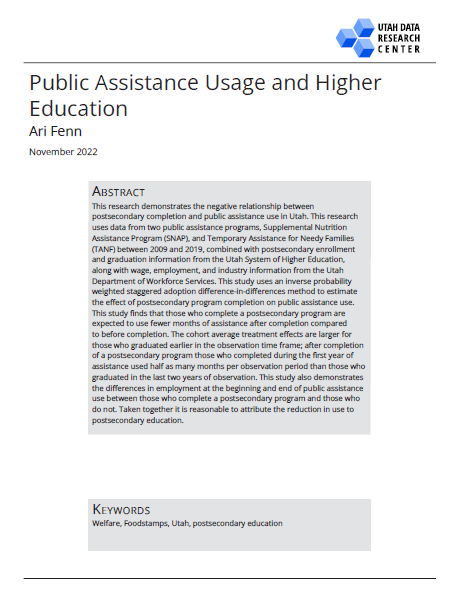Overview
This narrative shows how completion of a technical certificate, associate’s degree, or bachelor’s degree (postsecondary program from here) from a public technical college or degree-granting institution in Utah relates to use of public assistance programs. Public assistance in this research is two common programs Temporary Assistance for Needy Families (TANF), a cash-based assistance program, and Supplemental Nutrition Assistance Program (SNAP) which provides funds for families to supplement their food budget. These programs are designed to help families on their way to “self-sufficiency.” This research uses Utah Department of Workforce Services (DWS) data for SNAP and TANF users along with Utah Data Research Center's (UDRC) education and workforce data.
This study quantifies the difference in public assistance use for those who complete a postsecondary program before and after completion. This study looks at the five years after the first month of public assistance use for all SNAP and TANF users in Utah whose first month of use was between January 2009 and December 2019. UDRC previously established a relationship between education and earnings for a subset of this population. This study tests if the relationship between education and income extends to public assistance use. Those who completed a postsecondary program during their five-year observation window are referred to as the treatment group. Those who did not complete a postsecondary program are the control group. The control group is used to help establish overall trends of use.

